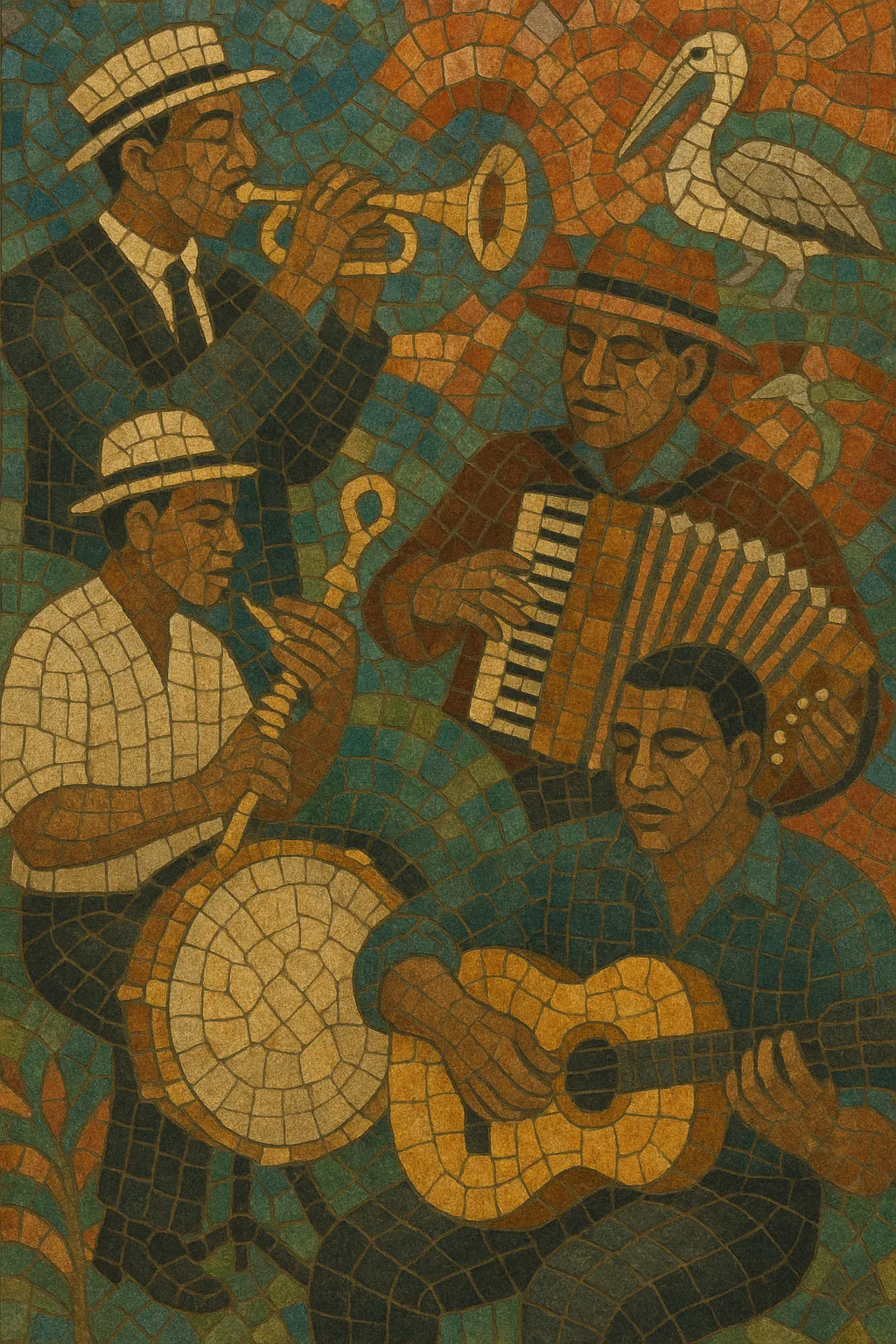
Louisiana music is a rich regional tapestry that blends African, French, Caribbean, and American roots into a set of distinctive styles associated with the state of Louisiana, especially New Orleans and the Acadiana region.
It encompasses the second‑line brass band tradition, early jazz and rhythm & blues from New Orleans, Cajun dance tunes and waltzes, Creole zydeco grooves built around accordion and rubboard, and the humid, blues‑inflected sounds of swamp pop and swamp blues. Hallmarks include syncopated “second‑line” rhythms, the Cuban habanera/clave pulse in early New Orleans music, call‑and‑response, blue notes, and a unique mingling of English, Louisiana French, and Creole lyrics.
More than a single genre, “Louisiana music” denotes a family of styles whose feel is communal, dance‑forward, and deeply tied to local celebrations like Mardi Gras, trail rides, fais‑do‑dos, and second‑lines.
French, Spanish, and African presences in Louisiana created a Creole culture where European dance forms and folk songs mixed with West and Central African rhythmic practices. Military and civic brass bands, church music, and parlor song coexisted with Black social dance traditions, setting the stage for a uniquely hybrid musical life.
New Orleans became a crucible for early jazz, transforming ragtime and blues with polyphonic horn lines, collective improvisation, and a habanera/clave undercurrent heard in early brass bands and piano styles. This era codified second‑line rhythms attached to parades and social aid & pleasure clubs, embedding syncopation and call‑and‑response in the city’s sound.
In Acadiana, Cajun music—descended from Acadian/French folk—flourished with fiddle, accordion (later), guitar, and triangle, alternating two‑steps (2/4) and waltzes (3/4). Creole musicians fused blues and R&B with traditional dance music, leading by mid‑century to zydeco, spearheaded by Clifton Chenier, which featured button/ piano accordion, rubboard (frottoir), and driving backbeats.
Producers and writers like Dave Bartholomew and Allen Toussaint shaped a rolling, piano‑led New Orleans R&B sound (Fats Domino, Professor Longhair, Irma Thomas). Its shuffles, triplet feels, and second‑line syncopation fed directly into early rock ’n’ roll, influencing national pop, soul, and funk.
Along the bayous, swamp pop and swamp blues melded country balladry, New Orleans R&B, and South Louisiana French‑Creole sensibilities into humid, reverb‑kissed slow‑dancers and blues grooves. In New Orleans, The Meters distilled second‑line into minimalist, interlocking funk—another Louisiana export that reshaped popular music.
Cajun and zydeco enjoyed festival‑driven revivals; brass bands modernized second‑line traditions; and New Orleans hip‑hop birthed bounce—an energetic, call‑and‑response club style tied to local rhythms. Today, Louisiana music thrives as a living ecosystem, celebrated in Mardi Gras parades, fais‑do‑dos, trail rides, and venues from Lafayette to the Tremé.

